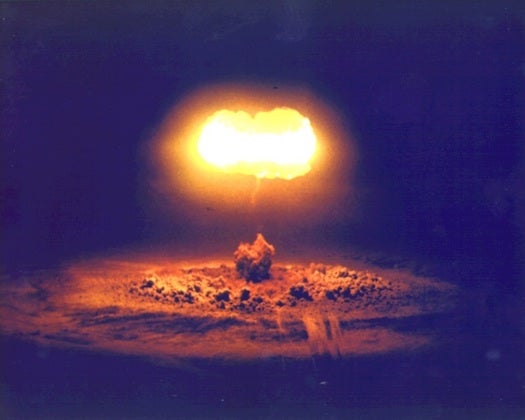Do Adults Keep Making New Brain Cells? Cold War-Era Radiation Reveals Answer
A different kind of carbon-14 dating

When the U.S. and Soviet Union tested nuclear weapons aboveground in the 1950s and 1960s, they left their mark on everyone alive at that time. The tests released unusual amounts of carbon-14 into the atmosphere, which people’s cells would sometimes incorporate into their DNA when they divided—whenever skin cells renewed themselves, for example, or hair strands grew one cell longer.
In 1963, the Limited Test Ban Treaty banned such aboveground tests. Those isotopes of carbon-14, which are unstable, decayed. Now, a team of biologists from Europe and the U.S. has used that timely marking in an innovative way. The researchers looked for carbon-14 in the brain cells of those who were adults during aboveground nuclear testing, but since died and donated their brains to research, Science reported. The team’s results bolster evidence for the idea that adults are able to form new brain cells.
In fact, you might be surprised how little evidence there had been before of adult brain cell formation. I was. Only one study has ever shown that adult humans make new brain cells, the Europe-U.S. researchers wrote in a paper they published yesterday in the journal Cell. Scientists have worked since then to show that other adult animals make new brain cells, but nobody repeated the study in humans because scientists later discovered that the chemical they used on their human volunteers was toxic. (It’s not just scientists who give a lot to understanding the natural world.)
The Europe-U.S. team calculated that adult brains make about 1,400 new brain cells every day. That’s not a net gain–the brain loses cells and then makes new ones to replace them, Kristy Spalding, a biologist at the Karolinska Institutet in Sweden and one of the study’s lead authors, told Science.
Check out the Science link for more about how Spalding and her colleagues worked to develop their carbon-14 dating technique. Before working on brains, the team dated a lot of cool things with the nuclear signatures of the Cold War.
[Science]